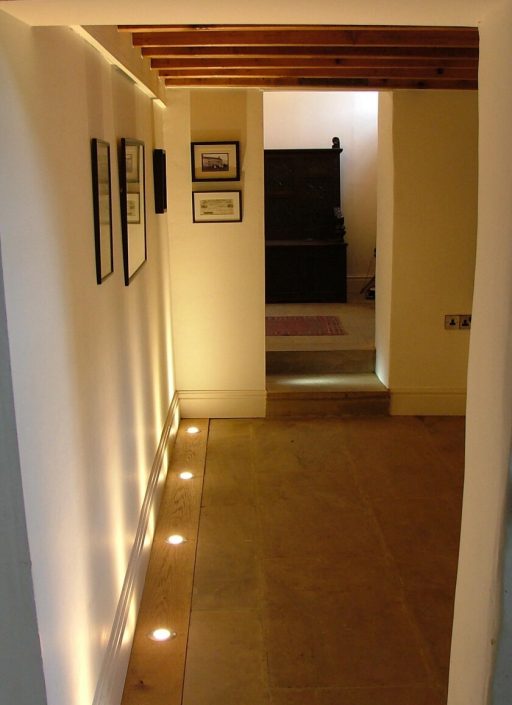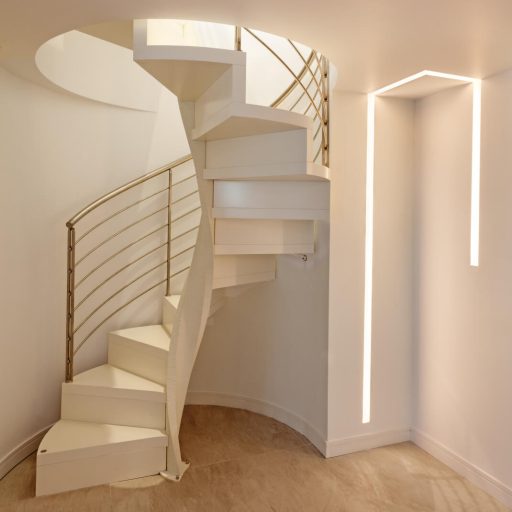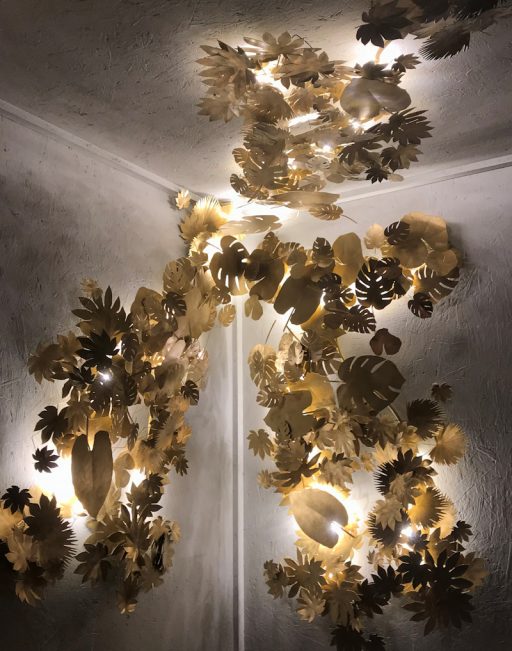
A study in lighting low ceilings
Ceiling height is a major consideration in this project and this study looks what the challenges are and how they can be overcome.
Lighting rooms with low ceilings is a challenge we frequently face in older buildings and occasionally in new builds. Even a standard height c.2.4m ceiling can feel low in very large rooms. Occasionally that enclosed feel is desirable, think very rich, dark restaurants for example, but most of the time the objective is to create a lighter, brighter, visually taller space. We use a variety of techniques to help “lift” a room, through careful lighting design and light fitting selection.
Light reflecting off the ceiling will make the space feel taller. Downlighting is practical, but if used on its own the ceiling will appear relatively dark vs the bright floor, and therefore lower. An interesting design will therefore look at all the fixing points available: floor, walls, joinery and ceiling to incorporate ways of washing light upwards.
Where downlights are used they should be used to bounce light off vertical surfaces (walls, joinery, artwork) rather than just down in the centre of the room, as again this will “lift” the room.
In older buildings ceiling void spaces are often limited. Ceiling surface mounted fittings close to head height can be uncomfortable and visually intrusive. Alternative fixing points therefore become even more important.
In this Yorkshire Dales cottage we used low glare uplights as the primary light source in this connecting room. It makes the space dynamic rather than flat and the light reflecting off the low beamed ceiling gives plenty of illumination.
New builds or substantial renovations potentially allow for even more creativity. In this very contemporary house, the basement floor – which was predominantly used for entertaining and bedrooms for teenage boys had both low ceilings and very limited void availability due to the amount of HVAC kit also in the ceiling. The brief was for a funky, fun space, and, because it was naturally dark, for it not to feel oppressive.
We used a plaster-in profile with concealed light sources within it; you can’t see the light fitting itself, but only the light as it diffuses around the plaster profile. This gives an incredibly soft, diffuse effect, and by zigzagging the profile across the walls and ceiling it blurs the distinction between them.
Decorative light fittings (pendants, wall lights) can play a critical role. Too often people can spend sometimes quite substantial sums on decorative fittings without considering their light output and distribution. This isn’t helped by decorative fittings rarely being photographed with the lights on!
Where fixing points are limited though they can be the primary light source, and so should be chosen appropriately.
In rooms with low ceilings we would look for pendants and wall lights which gave a diffuse upward distribution of light, as well as appropriately punchy ambient light.
Or you can really go for it! The wonderful bespoke fittings seen right can be designed to flow organically across a space.



